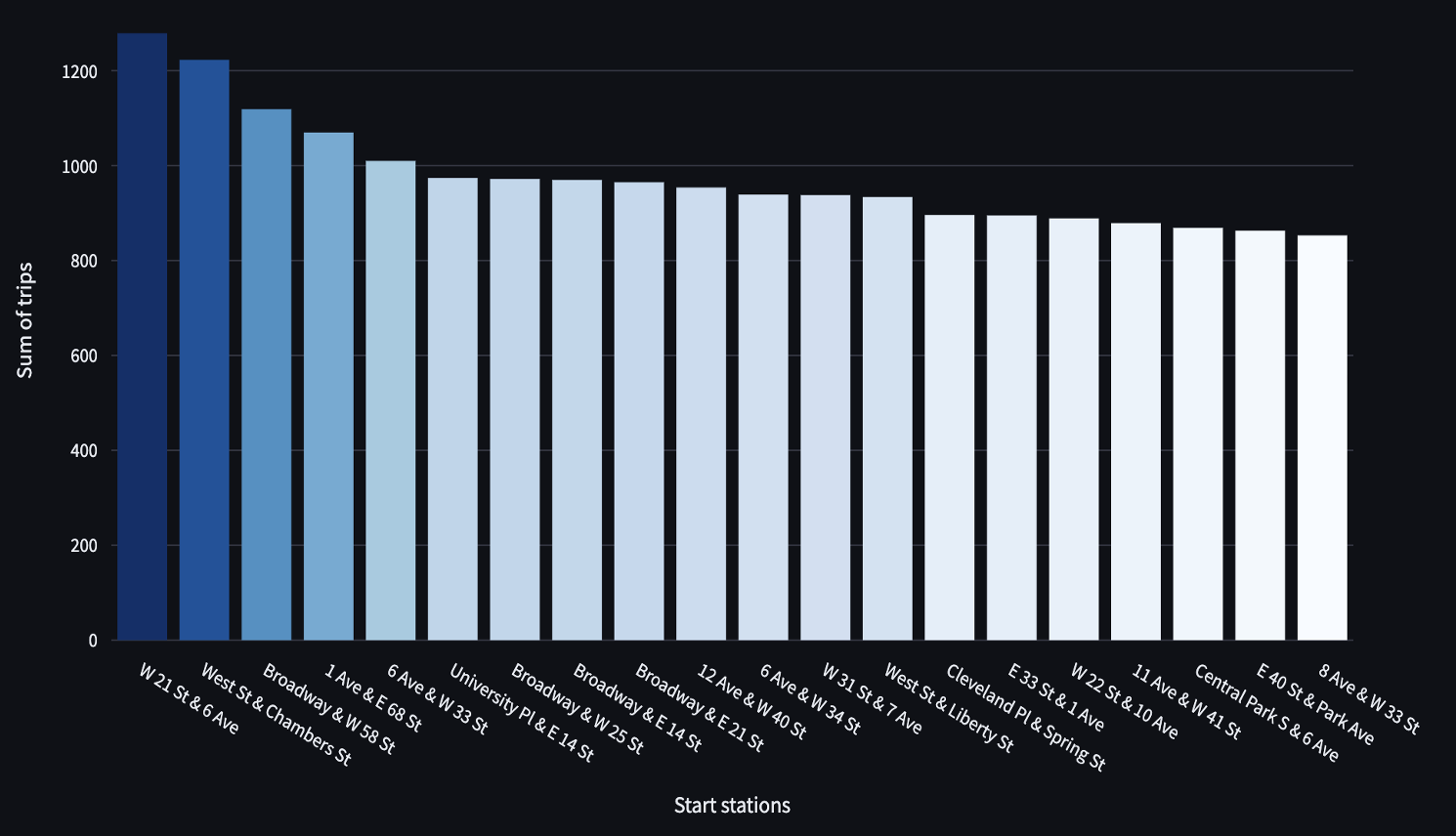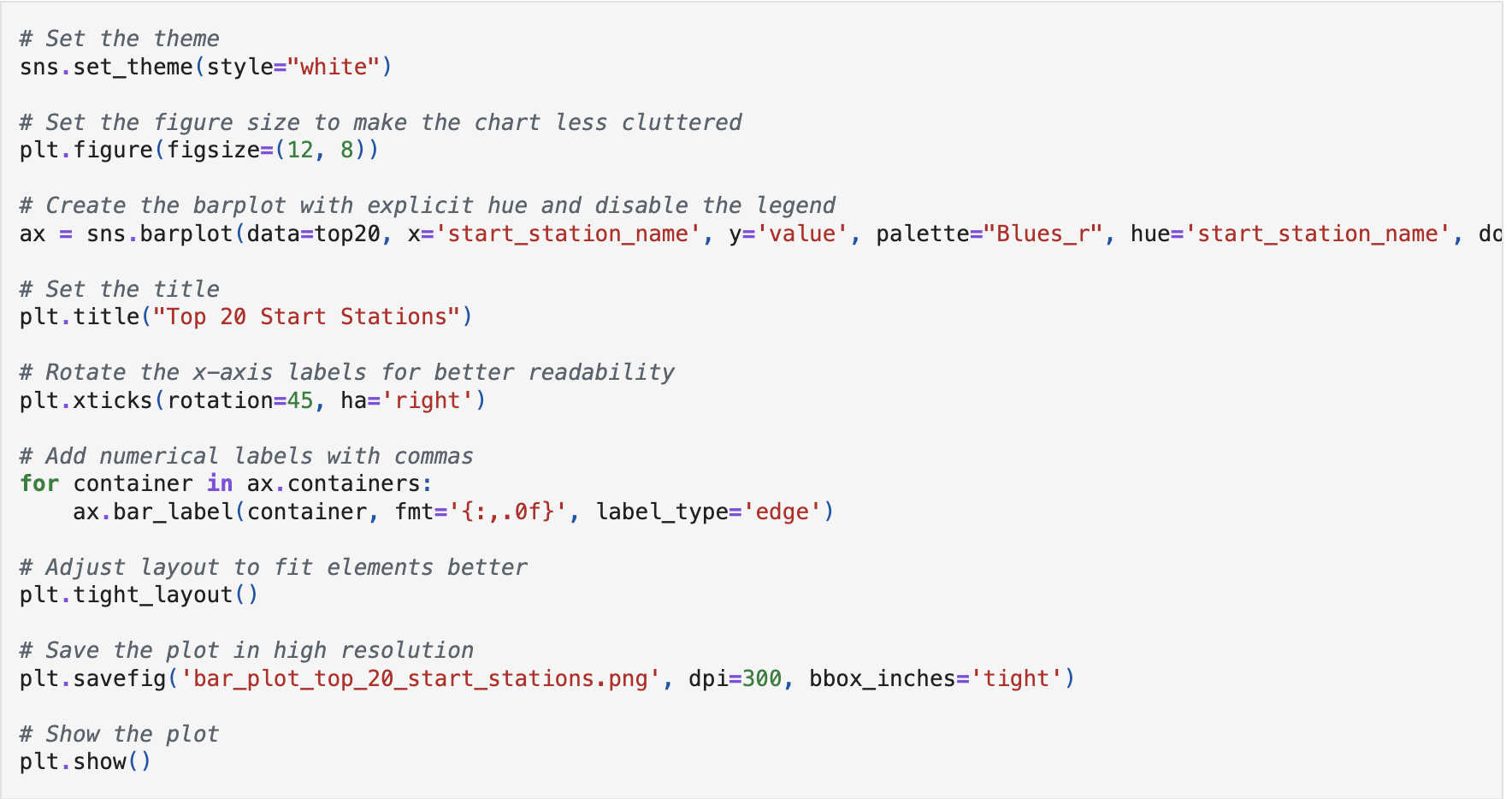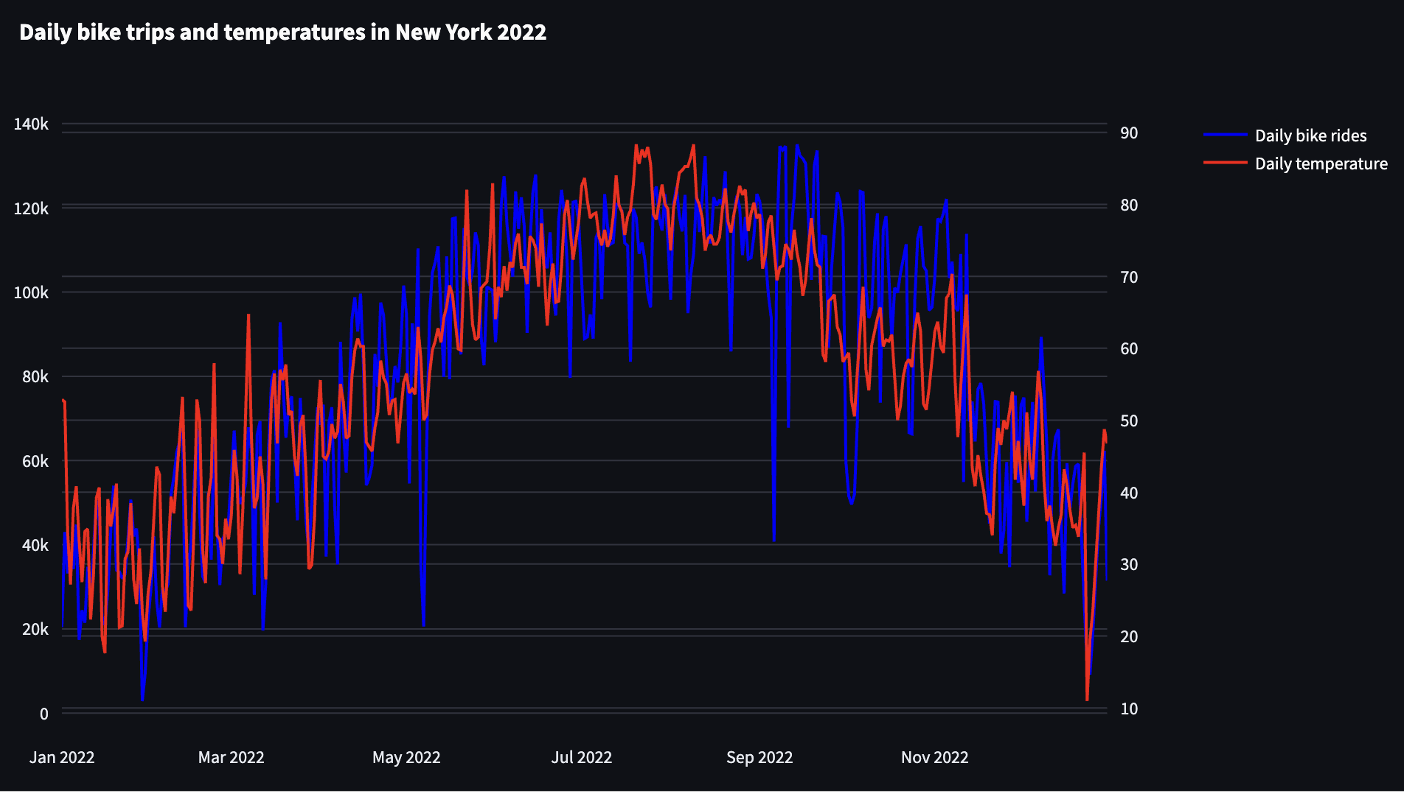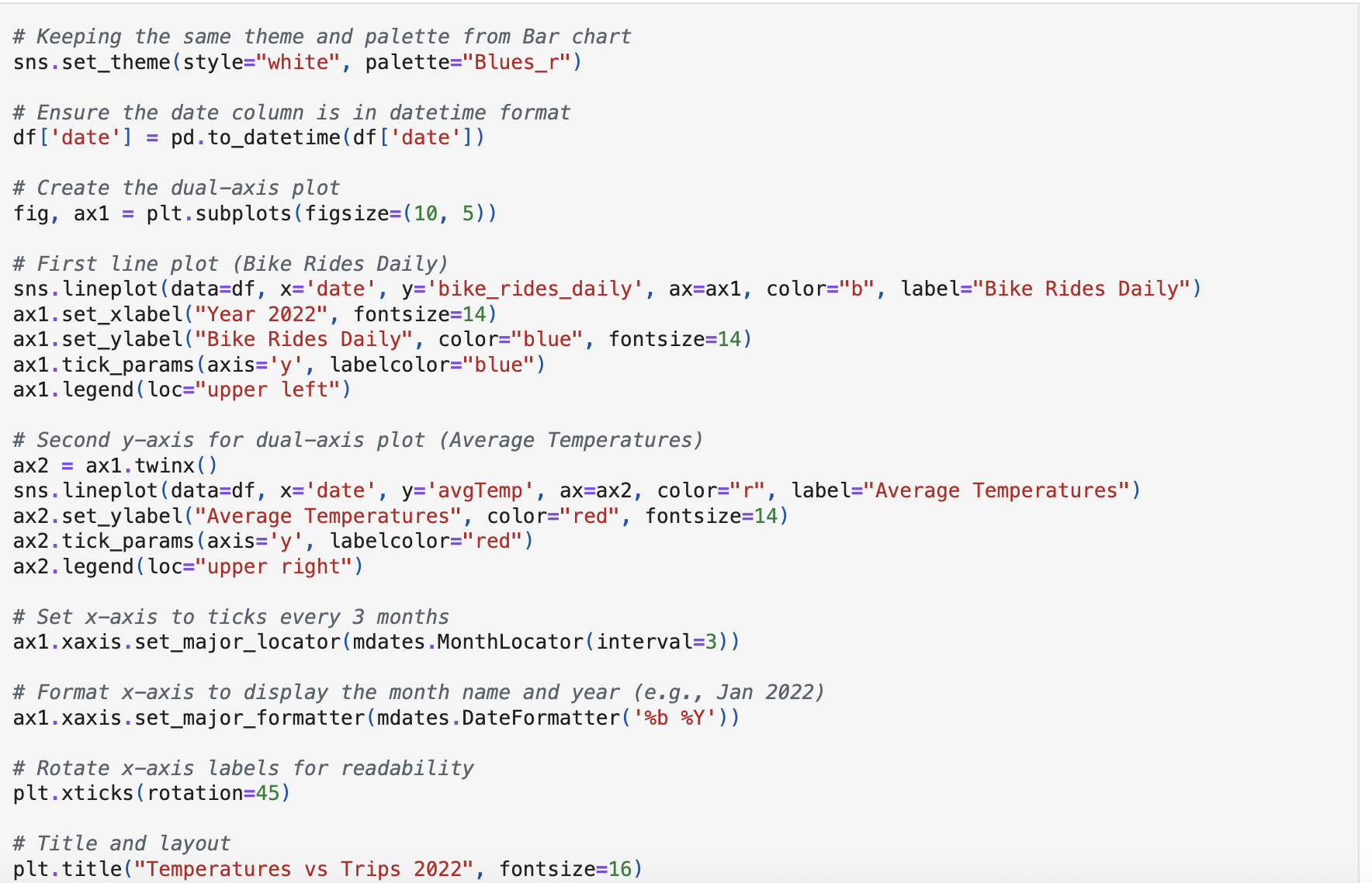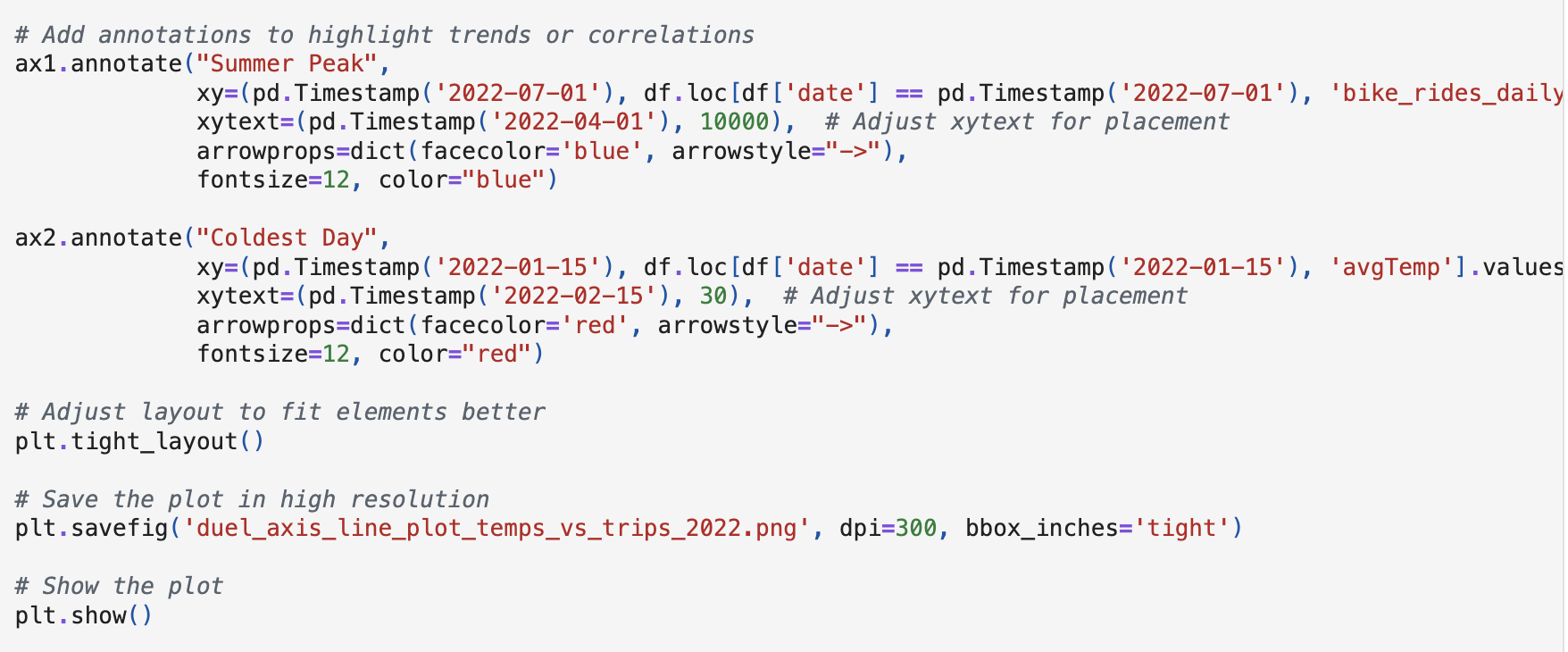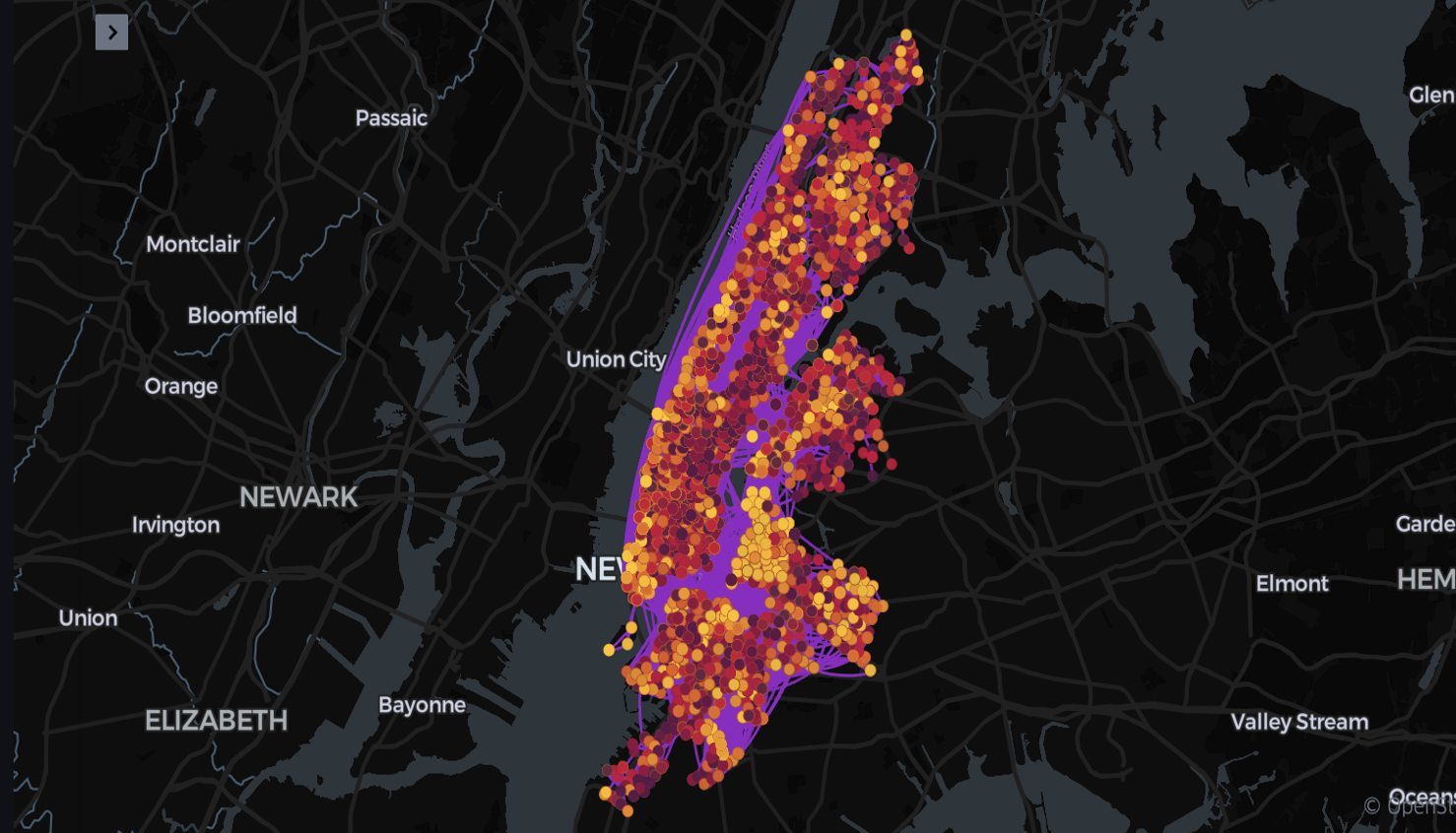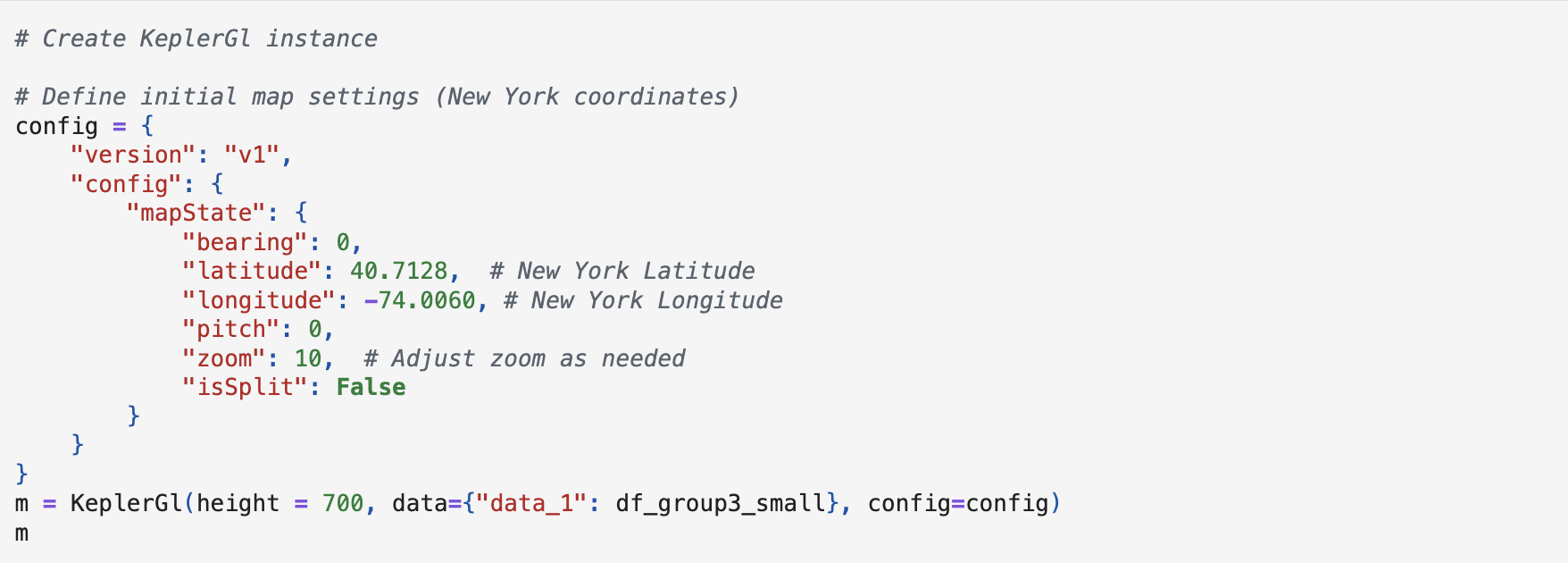Citi Bike Strategy Case Study
Project Overview
Citi Bike users often face bike shortages during certain times and locations. This case study explores key data-driven insights to address availability gaps and guide expansion efforts.
Role: Data Analyst
Tools Used: Python, Pandas, NumPy, Matplotlib, Seaborn, Plotly, Kepler.gl, Streamlit
Data Sources: Citi Bike API, NOAA Weather API (New York, 2022)
Objectives
- Identify high-demand stations and usage trends
- Understand weather’s impact on ridership
- Locate underused and underserved areas
- Recommend redistribution strategies and expansion zones
Visualizations
1. Most Popular Stations
Bar chart showing the top 20 most-used Citi Bike stations in NYC, highlighting hotspots near major avenues, parks, and transit hubs.
Figure 1: Top 20 most popular Citi Bike stations in NYC.
Figure 1b: Annotated version with numeric bar labels and enhanced formatting.
2. Monthly Trends and Weather Correlation
Dual-axis chart comparing trip volume with daily average temperature to understand how weather impacts ridership.
Figure 2: Seasonal bike usage trends vs. average temperature.
Figure 2b: Dual-axis plot showing bike rides and temperature with labeled axes and date formatting.
Figure 2c: Annotated version highlighting peak summer ridership and coldest days.
3. Trip Density and Station Distribution
Kepler.gl map showing ride density and station placement across NYC, revealing underserved and high-demand areas.
Figure 3: Interactive map showing aggregated bike trips in New York City.
Figure 3b: Python code-driven Kepler.gl map setup showing default zoom, coordinates, and configuration for NYC.
Challenges and Solutions
| Challenge | Solution |
|---|---|
| Extra records from 2021/2023 | Filtered by date in Python to isolate 2022 data |
| Temperature conversion errors | Corrected Celsius-to-Fahrenheit formula |
| Incorrect geospatial plotting | Verified and corrected latitude/longitude mapping |
| Large dashboard file size | Filtered out low-frequency trips (under 65) to reduce size |
Conclusions and Recommendations
- Seasonal Optimization: Reduce bike inventory by 20–30% in winter months. Use weather forecasts for dynamic inventory adjustments.
- Redistribution: Balance bike supply in high-traffic areas based on historical demand using predictive modeling.
- Expansion Opportunities: Increase capacity near parks, waterfronts, and underserved areas such as Northern Manhattan and parts of Brooklyn and Queens.
